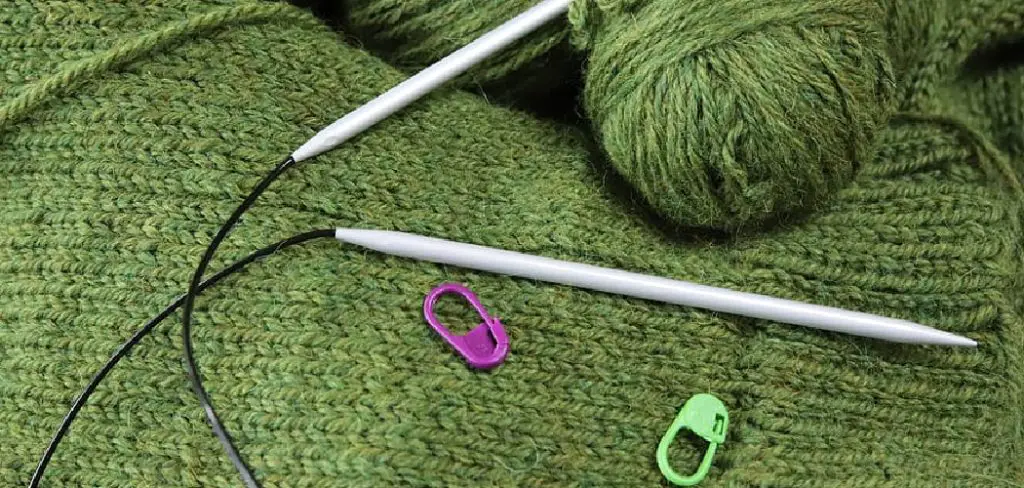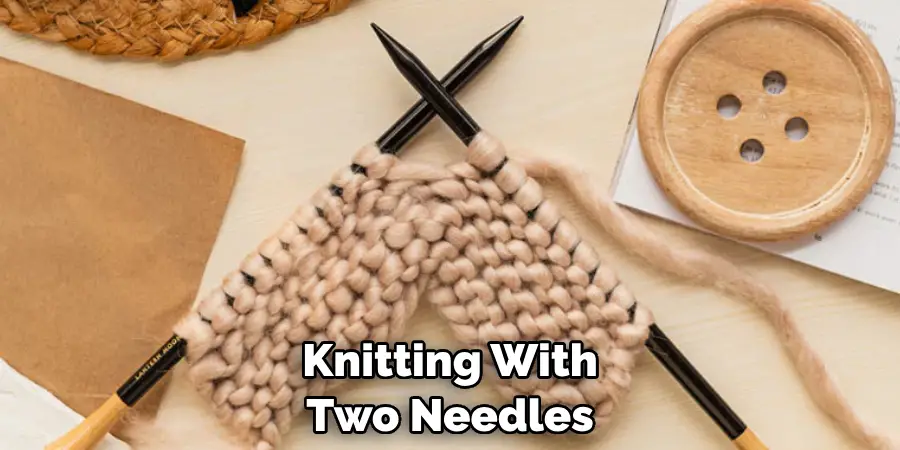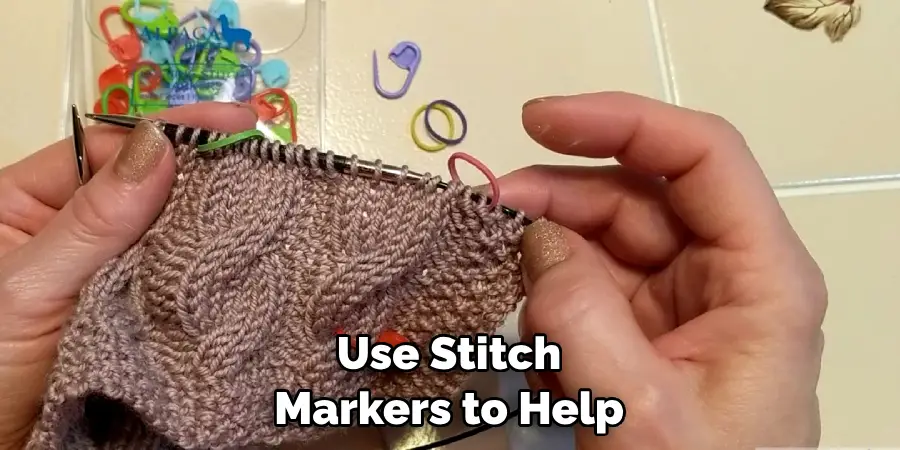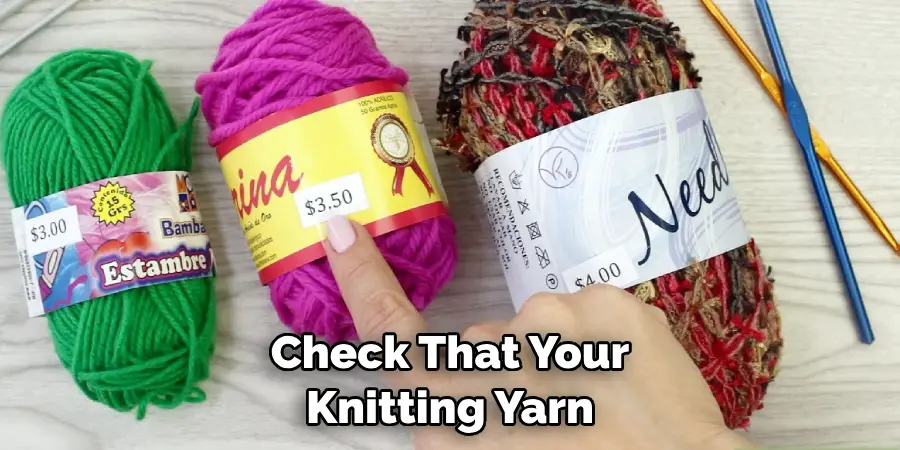Are you a beginner knitter looking to get started? If so, casting on knitting with two needles might seem like a daunting task, but it doesn’t have to be. Learning the basics of how to cast on is essential for any budding knitter and thankfully, mastering this technique is relatively easy once you understand the key steps involved.

In this blog post, we’ll walk you through how to cast on knitting with two needles, step-by-step from start to finish! We will also provide helpful tips along each part of the way that will ensure successful results every time. So grab your needles, and let’s get started!
Supplies You Will Need to Cast on Knitting With Two Needles
- Knitting needles
- Yarn
- Scissors
- Tape measure (optional)
- Crochet hook (optional)
Step by Step Guidelines on How to Cast on Knitting With Two Needles
Step 1: Prepare the Needles and Yarn
The first step in casting on knitting with two needles is to prepare your supplies. Start by selecting the right yarn for your project and making sure it’s not too thick or thin for the needles you’ve chosen.
Once the yarn is selected, cut off a length that is twice as long as your desired cast-on stitches and thread it onto one needle. Preparing the needles can be done by simply sliding one needle onto each end of the yarn.

Step 2: Create a Slip Knot
Now create a slip knot. To do this, take the tail end of your yarn and make a loop with it, holding both ends of the yarn in your hand. Then pull the tail through to form a knot and pull it tight. Place the slip knot onto one of your needles – this will be the first stitch of your cast-on edge. Creating a slip knot is the most important step as it will determine the size of your cast-on edge.
Step 3: Create the First Cast-On Stitch
Next, move the yarn that’s on your first needle (the one with the slip knot) to the back of your work and pick up your second needle. With both needles in your left hand, bring the yarn around and over the second needle from front to back.
Now, wrap the yarn around the first needle again (from front to back) and pull it through the slip knot. Finally, release the loop of yarn that is on your second needle creating another stitch. This will be counted as your second cast-on stitch.
Step 4: Repeat Steps 2 and 3
The final step in casting on knitting with two needles is to repeat steps 2 and 3 until you have the desired number of cast-on stitches. To help ensure a consistent edge, make sure that each loop of yarn pulled through the slip knot is just slightly tighter than the one before it. Once you have the desired number of stitches, cut off the yarn tail and start knitting!

Now that you know how to cast on knitting with two needles, it’s time to get creative and start your next project. The techniques described here are just the beginning of a whole world of possibilities when it comes to knitting! So don’t be afraid to experiment with different yarns, stitches, and even needles as you practice this skill.
Additional Tips and Tricks to Cast on Knitting With Two Needles
Once you have mastered the basic technique of casting on with two needles, there are some additional tricks and tips that can help to make your project go more smoothly. Here are a few things to keep in mind:
1. Make sure that your cast is even. This means that all of the loops should be the same size and tension so that your project looks uniform and professional.
2. Consider using a cable cast, if you are working with a more complicated pattern or need extra support for the stitches. A cable cast-on uses two needles to create a looped edge that is much stronger than a regular cast-on.
3. Use stitch markers to help keep track of your progress and to make sure you are casting on correctly and evenly.

4. Practice makes perfect! The more times you practice your cast-on technique, the easier it will be to do when working on a larger project such as a sweater or blanket.
5. Don’t be afraid to experiment with different types of yarns and needle sizes. Different materials may require different techniques or stitches, so make sure to do your research beforehand.
6. Have fun! Knitting is a great way to relax and express your creativity, so take the time to enjoy the process as much as you can.
By following these instructions and tips, you should be able to successfully cast on knitting with two needles and make beautiful projects! Don’t forget that practice makes perfect – it may take a few tries before you get it just right, but with some patience and practice, you can become an expert at casting on knitting. Good luck!
Precautions Need to Follow for Casting on Knitting With Two Needles
1. Before casting on two needles, make sure to inspect the needles for any signs of wear or damage. It is also important to check that your knitting yarn is properly wound and free from knots.
2. To prevent accidental snagging, it is best to avoid using plastics or metal knitting needles when casting on. If possible, choose wooden or bamboo needles as these are less likely to snag the yarn.
3. Make sure that you read the pattern instructions carefully before starting your project. This will help ensure that you are casting on correctly and in accordance with the pattern directions.
4. When ready to begin, make sure to use a slip knot as this makes it easier to cast onto two needles at once. To create the slip knot, make a loop by crossing one strand over the other and then pulling the tail of the yarn through.
5. To begin casting on, place the slip knot onto one needle as this will be your starting point. Then, grasp both needles with your right hand with the two strands of yarn between them.
6. Use your left hand to move the strand of yarn over the needle in your right hand. Keep pulling the strand through until a new stitch is created on both needles.
7. Once you have cast on enough stitches, gently pull the knitting needles apart and check that all of the stitches look even and uniform.

8. It is important to keep your tension consistent while casting on two needles. You should also keep your hands and fingers away from the working yarn as this can interfere with the knitting process.
Following these precautions will help ensure that you are casting on correctly and with minimal risks. With enough practice, you can master the art of knitting with two needles in no time!
Frequently Asked Questions
What Type of Yarn Should I Use?
When casting on knitting with two needles, it’s best to use a lightweight yarn. Most beginners start out with acrylic or wool yarn, as they are easy to work with and come in a variety of colors. If you are looking for something more durable, then cotton yarn is a great option too!
Just remember that the type of yarn you choose will determine the size of your project, so be sure to read the label carefully before choosing one.
Is Casting On Difficult?
Casting on is not a difficult task, but it can seem daunting for beginners. Don’t worry though! With patience and practice, you’ll get the hang of it in no time. Just remember to take it slow and be sure to count your stitches as you go. This will help ensure that you don’t have any mistakes in your work.
What Are Some Common Mistakes?
One of the most common mistakes when casting on is losing count of your stitches. It’s easy to lose track, especially when you’re just starting out. Another common mistake is not using the right size needles. Be sure to check your pattern and use the recommended needle size for best results.
Conclusion
Now that you have learned the basics of how to cast on knitting with two needles, why not challenge yourself and put it into practice? Grab two needles and a ball of yarn, find a comfortable chair, and give it a shot. Don’t be discouraged if it takes some time to get the hang of it – with some patience and practice, you’ll be casting on like an expert in no time!
Once you perfect the technique of knitting with two needles, your knitting projects will never be the same. You’ll be able to knit more complex items faster and with greater precision than ever before. So get creative and start casting!

